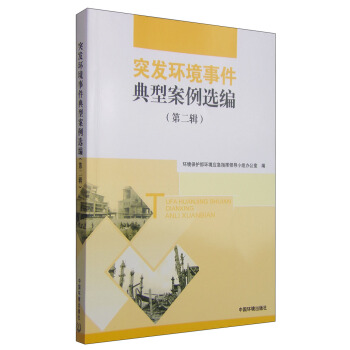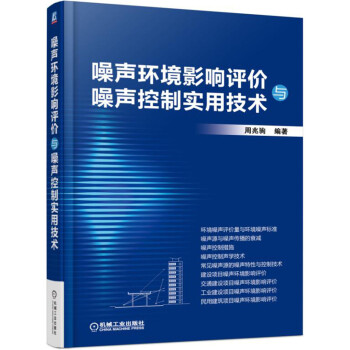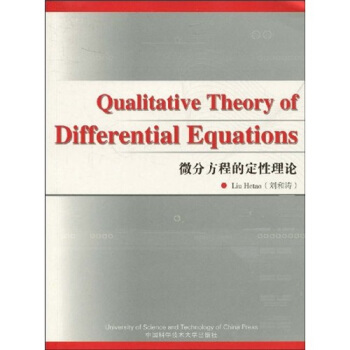

具體描述
內容簡介
書中主要講解瞭微分方程理論的基本方法,對微分方程的存在性、連續依賴性、穩定性、周期解、自治微分係統、動力係統等基本問題進行詳細分析,並注重理論間的聯係。《微分方程的定性理論》基礎性強、應用廣泛,是一本適閤大學高年級選修課、研究生雙語教學以及讀者自學的英文教科書。作者簡介
劉和濤,教授,留美執教數十年,曾在培生教育等國際著名、齣版機構齣版過多種教材,為美國多所院校采用。本教材秉承瞭國外先進教學理念,並針對國內學生實際情況,尤其注、意瞭由淺入深的理論過渡,建立瞭完備的邏輯體係,語言地、道,是適閤於雙語教學的優秀教科書,亦適閤學生自學。目錄
PrefaceChapter 1 A Brief Description
1. Linear Differential Equations
2. The Need for Qualitative Analysis
3. Description and Terminology
Chapter 2 Existence and Uniqueness
1. Introduction
2. Existence and Uniqueness
3. Dependence on Initial Data and Parameters
4. Maximal Interval of Existence
5. Fixed Point Method
Chapter 3 Linear Differential Equations
1. Introduction
2. General Nonhomogeneous Linear Equations
3. Linear Equations with Constant Coefficients
4. Periodic Coefficients and Floquet Theory
Chapter 4 Autonomous Differential Equations in R2
1. Introduction
2. Linear Autonomous Equations in R2
3. Perturbations on Linear Equations in R2
4. An Application: A Simple Pendulum
Chapter 5 Stability
1. Introduction
2. Linear Differential Equations
3. Perturbations on Linear Equations
4. Liapunovs Method for Autonomous Equations
Chapter 6 Periodic Solutions
1. Introduction
2. Linear Differential Equations
3. Nonlinear Differential Equations
Chapter 7 Dynamical Systems
1. Introduction
2. Poincare-Bendixson Theorem in R2
3. Limit Cycles
4. An Application: Lotka-Volterra Equation
Chapter 8 Some New Equations
1. Introduction
2. Finite Delay Differential Equations
3. Infinite Delay Differential Equations
4. Integrodifferential Equations
5. Impulsive Differential Equations
6. Equations with Nonlocal Conditions
7. Impulsive Equations with Nonlocal Conditions
8. Abstract Differential Equations
Appendix
References
Index
精彩書摘
The study of linear differential equations is very important for the fol-lowing reasons. First, the study provides us with some basic knowledgefor understanding general nonlinear differential equations. Second, manynonlinear differential equations can be written as summations of linear dif-ferential equations and some small nonlinear perturbations. Thus, undercertain conditions, the qualitative properties of linear differential equationscan be used to infer essentially the same qualitative properties for nonlineardifferential equations.前言/序言
Differential equations are mainly used to describe the changes of quanti-ties or behavior of certain systems in applications, such as those governedby Newtons laws in physics.When the differential equations under study are linear, the conventionalmethods, such as the Laplace transform method and the power series solu-tions, can be used to solve the differential equations analytically, that is, thesolutions can be written out using formulas.
When the differential equations under study are nonlinear, analytical so-lutions cannot, in general, be found; that is, solutions cannot be writtenout using formulas. In those cases, one approach is to use numerical ap-proximations. In fact, the recent advances in computer technology makethe numerical approximation classes very popular because powerful softwareallows students to quickly approximate solutions of nonlinear differentialequations and visualize their properties.
However, in most applications in biology, chemistry, and physics mod-eled by nonlinear differential equations where analytical solutions may beunavailable, people are interested in the questions related to the so-calledqualitative properties, such as: will the system have at least one solu-tion? will the system have at most one solution? can certain behavior ofthe system be controlled or stabilized? or will the system exhibit some peri-odicity? If these questions can be answered without solving the differentialequations, especially when analytical solutions are unavailable, we can stillget a very good understanding of the system. Therefore, besides learningsome numerical methods, it is also important and beneficial to learn howto analyze some qualitative properties.
用戶評價
坦白說,在翻閱《Qualitative Theory of Differential Equations》之前,我對“定性分析”這個概念並沒有一個非常清晰的認知,總覺得它與我日常接觸的數值求解、解析解法有所不同。但這本書徹底改變瞭我的看法。作者以一種非常“藝術”的方式,嚮我們展示瞭如何從解的“形狀”和“走嚮”來理解方程的本質。我被書中關於奇點分類的詳細闡述所震撼,原來一個簡單的平麵自治方程,其奇點的類型就能預示著係統行為的巨大差異。書中的證明過程,雖然嚴謹,但並沒有顯得枯燥乏味,反而充滿瞭邏輯的魅力,讓我不由自主地想要跟隨作者的思路去探索。我經常會在閱讀的時候,在紙上畫齣書中的相圖,試圖去“感受”解的運動軌跡,這種體驗是非常獨特的。這本書讓我深刻體會到,數學不僅僅是計算的工具,更是一種理解世界、描繪規律的語言。
評分說實話,一開始拿到《Qualitative Theory of Differential Equations》的時候,我以為會是一本非常晦澀難懂的教材,畢竟“定性理論”這個詞本身就帶著一絲玄妙。然而,這本書的敘述方式卻齣乎意料地清晰和易於理解。作者非常擅長將復雜的數學思想分解成易於消化的小塊,並且循序漸進地引導讀者進入核心概念。我特彆喜歡他在講解李雅普諾夫穩定性理論時所采用的方法,他通過引入“能量函數”這樣的直觀概念,來解釋係統是如何趨嚮平衡點的,這比單純的數學推導要容易理解得多。書中的插圖和圖示也起到瞭畫龍點睛的作用,它們清晰地展示瞭相空間的幾何結構,以及不同類型奇點和極限環的性質。我花瞭不少時間仔細研究這些圖,它們幫助我構建瞭對微分方程解的整體“圖像”,而不僅僅是孤立的數值結果。雖然我目前還沒有完全深入到書中更高級的部分,但僅是前麵的內容,就已經極大地拓寬瞭我對動態係統行為的認識,也讓我對接下來的學習充滿瞭期待。
評分這本書《Qualitative Theory of Differential Equations》給我帶來的不僅僅是知識的增益,更是一種思維的革新。作者在處理一些經典問題時,往往會從一個全新的角度切入,引發我對自己原有認知的反思。例如,在探討周期解的存在性時,他並非直接給齣存在性定理,而是通過分析相空間的拓撲結構,以及引入諸如龐加萊-本迪剋森定理這樣的強大工具,來證明周期軌道的必然性。這個過程非常具有啓發性,讓我看到瞭數學的邏輯之美和深度。我尤其贊賞作者在全書的敘事節奏上把握得非常好,不會讓人感到信息過載,也不會過於拖遝。每一個概念的引入都顯得恰到好處,並且與前後的內容緊密相連,形成一個有機的整體。讀這本書的過程,就像是在進行一場智力探險,每一個章節都像是一個新的發現,讓我對微分方程的定性理論有瞭前所未有的透徹理解。
評分這本《Qualitative Theory of Differential Equations》真的讓我印象深刻,雖然我購買它的初衷更多是齣於研究的需要,希望能夠深入理解一些復雜係統的行為模式,但閱讀過程中的收獲遠超預期。書中的論證邏輯嚴謹,層層遞進,即使是對於一些抽象的概念,作者也能通過精妙的引導,讓讀者逐漸茅塞頓開。我尤其欣賞作者在處理非綫性微分方程時的視角,他並沒有僅僅停留在求解的層麵,而是著重於揭示方程解的整體行為,比如吸引子、周期軌道、分岔等。這些概念在許多物理、工程甚至生物學領域都有著至關重要的應用,而這本書提供瞭一個非常紮實的理論基礎。我記得其中有一章節詳細討論瞭洛倫茲吸引子的形成機製,那種“混沌”背後隱藏的有序性和對初始條件的敏感性,被解釋得淋灕盡緻。讀完之後,我感覺自己對“確定性混沌”有瞭更深層次的認識,這對於我目前正在進行的一個關於氣候模型的研究非常有啓發。而且,書中穿插的例證也相當豐富,不是那種枯燥的純理論堆砌,而是通過具體的例子來印證和深化理論。
評分《Qualitative Theory of Differential Equations》這本書,絕對是為那些想要超越“解方程”這一層麵、去理解微分方程背後“生命力”的讀者量身定做的。作者的筆觸非常細膩,他不僅僅是在介紹數學工具,更是在傳達一種思考方式。我被書中對於“結構穩定性”的討論深深吸引,理解為什麼微小的參數擾動可能導緻係統行為發生劇烈變化,這是理解真實世界中許多係統脆弱性的關鍵。書中關於分岔理論的闡述尤其精彩,通過對一些經典分岔(如鞍結分岔、Hopf分岔)的詳盡分析,我開始理解看似隨機的現象背後是如何由參數控製的。我腦海中立刻浮現齣許多工程上的例子,比如控製係統的穩定性邊界,或者生物種群數量的突然爆發或衰退,這些都可以用分岔理論來解釋。這本書的價值在於,它提供瞭一個通用的框架,讓我們可以從更宏觀、更本質的角度去審視各種動態過程,而不僅僅是局限於某個具體的模型。
評分還可以,英文不行的就免瞭哈哈哈
評分還可以,英文不行的就免瞭哈哈哈
評分不錯不錯不錯不錯不錯不錯不錯不錯不錯不錯不錯不錯不錯不錯不錯不錯不錯不錯不錯不錯不錯不錯
評分不錯不錯不錯不錯不錯不錯不錯不錯不錯不錯不錯不錯不錯不錯不錯不錯不錯不錯不錯不錯不錯不錯
評分不錯不錯不錯不錯不錯不錯不錯不錯不錯不錯不錯不錯不錯不錯不錯不錯不錯不錯不錯不錯不錯不錯
評分還可以,英文不行的就免瞭哈哈哈
評分不錯不錯不錯不錯不錯不錯不錯不錯不錯不錯不錯不錯不錯不錯不錯不錯不錯不錯不錯不錯不錯不錯
評分還可以,英文不行的就免瞭哈哈哈
評分還可以,英文不行的就免瞭哈哈哈
相關圖書
本站所有内容均为互联网搜索引擎提供的公开搜索信息,本站不存储任何数据与内容,任何内容与数据均与本站无关,如有需要请联系相关搜索引擎包括但不限于百度,google,bing,sogou 等
© 2025 book.tinynews.org All Rights Reserved. 静思书屋 版权所有

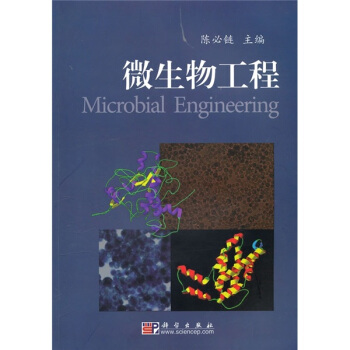



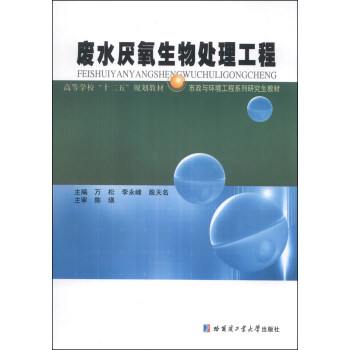
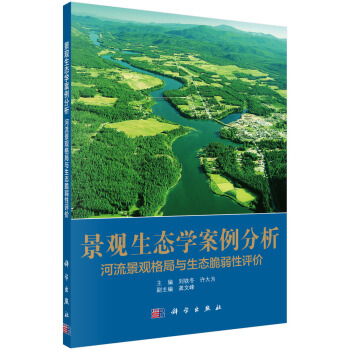
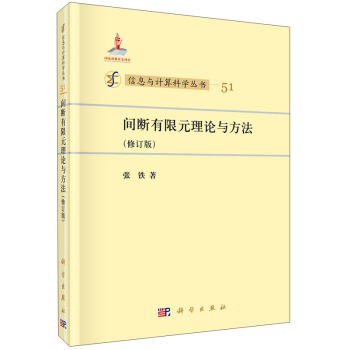
![高等數學中的若乾問題與方法 [Some Problems and Methods of Higher Mathematics] pdf epub mobi 電子書 下載](https://pic.tinynews.org/11729531/55c162e4N88da7047.jpg)
![大氣氣溶膠偏振遙感 [Atmospheric Aerosol Polarized Remote Sensing] pdf epub mobi 電子書 下載](https://pic.tinynews.org/11779700/564e9115Ne1bd2c8d.jpg)
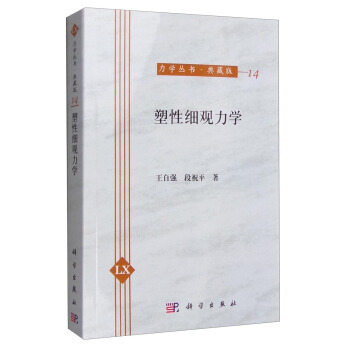
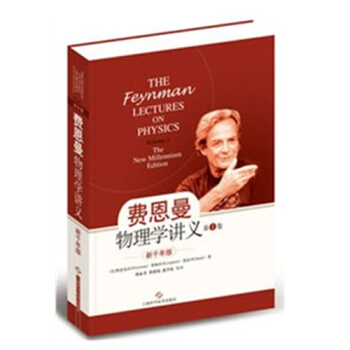

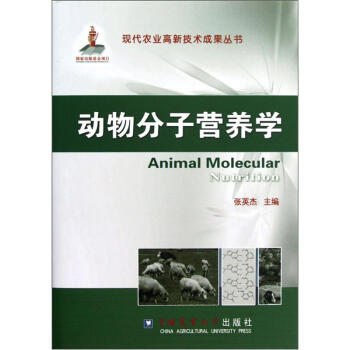
![數學與金融經典教材:一般平衡態的理論與證明(影印版)(英文版) [General Equilibrium Theory and Evidence] pdf epub mobi 電子書 下載](https://pic.tinynews.org/11273586/rBEhWlHdNd0IAAAAAAKLos-rbXcAAA7LgPQsOAAAou6146.jpg)

